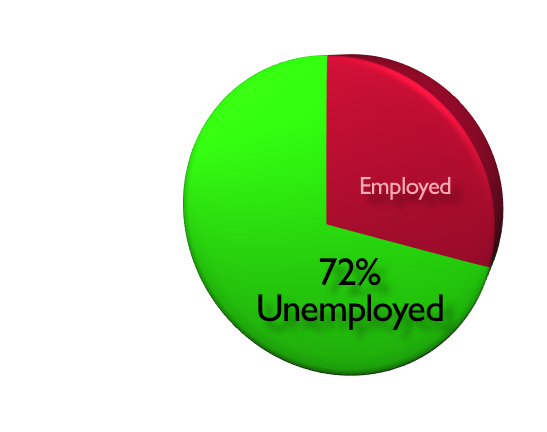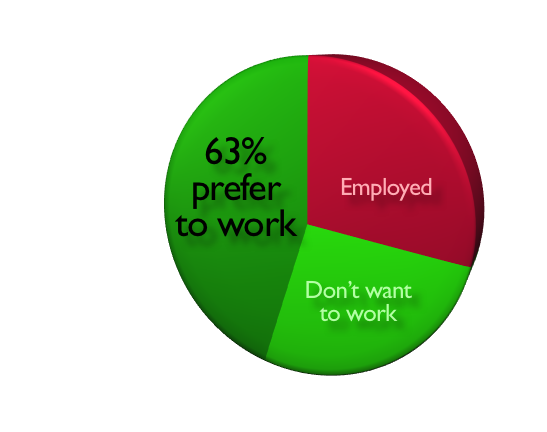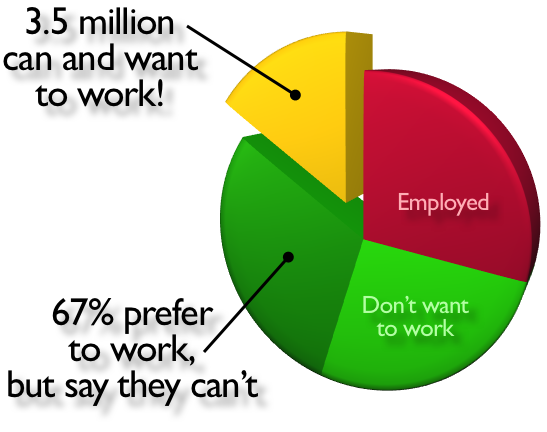Looking at the Numbers
The Huge Wasted Potential of Workers with Disabilities
Looking at the numbers – reliable numbers from reliable sources – it is crystal clear that there is a very large number of people willing and able to work who just aren't. Working.
Every few years, the National Organization on Disabilty in Washington D.C. conducts surveys with the highly reputable Louis Harris Organization. They look at a wide array of components of life with disability – social, health, activity, and, of course, employment.
Some things have improved over the years, some have not. Despite the passage of the ADA in 1996, the rate of unemployment among people with disabilities has little improved.
We begin with the U.S. Census Bureau. In 2006, 24 miliion people of working age identified themselves as having a disability.

72% of people with disabilities reported that they are not working.
72% of 24 million:
17 3/4 Million
Unemployed People
...for starters.

Of those 72% not working, 63% of them say that they prefer to be working. The portion that doesn't want to is either retired, in school, raising kids, or already independently wealthy from selling their internet startup!
11 Million
Unemployed People
Who Want to Work

Of those 63% who prefer to work, 67% say that their disabilities preclude them from being able to work. That leaves...
3.5 Million
Unemployed People with
Reported Disabilities Who
Want To and Are Able
To Work
At a time when we are hiring from outside the U.S. and when the Baby Boomer generation is on the verge of retirement, a bona fide human resource of millions of people is not to be passed over lightly.
An understanding of Modern Disability in workplace culture is a necessary first ingredient for tapping into this under-utilized pool, and to ensure that existing employees don't unnecessarily join the ranks of the unemployed. The unemployed, that is, with adaptable disabilities.
What's Changed | Wasted Human Potential | Stay-at-Work / Return-to-Work
Reasonable Accommodation | Assistive Tech | New Consumers
